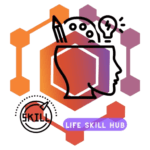Table of Contents
ToggleWhat is Content Writing?
Definition:
- Content writing involves the creation of written material for various purposes, such as websites, blogs, social media, or marketing collateral. The primary goal is to communicate information in a clear, engaging, and audience-focused manner.
Introduction to Different Types of Contents:
1. Blog Posts:
- Informative articles, often in a conversational style.
2. Articles:
- In-depth pieces exploring specific topics.
3. Web Content:
- Text that appears on websites, including homepage, about us, and product descriptions.
4. Social Media Content:
- Short, engaging posts tailored for platforms like Facebook, Twitter, and Instagram.
5. Email Marketing Content:
- Persuasive writing for email campaigns to engage and convert recipients.
6. Whitepapers/Reports:
- Comprehensive and authoritative documents providing insights and analysis.
7. Copywriting:
- Writing that aims to persuade or encourage actions, often used in advertising.
How to Improve Your Writing Skills?
1. Read Regularly:
- Exposure to different writing styles enhances your own skills.
2. Practice Writing:
- Regular writing exercises help refine your technique.
3. Seek Feedback:
- Constructive criticism from peers or mentors aids improvement.
4. Learn Grammar and Style:
- Understanding grammar rules and different writing styles is essential.
5. Expand Vocabulary:
- A rich vocabulary adds depth and variety to your writing.
How to Write SEO-Optimized Content?
1. Keyword Research:
- Identify relevant keywords related to your content.
2. Natural Keyword Placement:
- Integrate keywords seamlessly within the content.
3. High-Quality Content:
- Provide valuable and relevant information to users.
4. Optimize Headings and Subheadings:
- Use H1, H2, and H3 tags for a clear hierarchy.
5. Meta Descriptions:
- Craft compelling meta descriptions with relevant keywords.
Use of Proper Tags (H1, H2, H3):
1. H1 (Header 1):
- The main title of the page or post, often the most significant text.
2. H2 (Header 2):
- Subheadings that divide the content into sections.
3. H3 (Header 3):
- Subdivisions within H2 sections for further organization.
Attractive Titles and Headings:
1. Be Descriptive:
- Titles should give a clear idea of what the content is about.
2. Use Power Words:
- Incorporate words that evoke emotion or curiosity.
3. Keep It Concise:
- Titles and headings should be short and impactful.
Anchor Texts:
- Definition:
- Anchor texts are clickable text in a hyperlink.
- Best Practices:
- Be descriptive, relevant, and avoid generic phrases like “click here.”
How to Count Words:
- Manual Count:
- Count the words in a sentence and multiply by the total number of sentences.
- Use Word Processing Software:
- Most word processors provide a word count feature.
Understanding Your Audience:
1. Demographics:
- Know the age, location, interests, and preferences of your audience.
2. User Intent:
- Understand why users are seeking information and address their needs.
3. Tailor Content to Your Audience:
- Create content that resonates with your specific target audience.
Write for Users, Not for Google:
- Focus on Relevance:
- Prioritize delivering valuable and relevant content to your audience.
What Makes Good Content?
1. Relevance:
- Addresses the audience’s needs and interests.
2. Clarity:
- Easy to understand with a logical flow of information.
3. Engagement:
- Captivates the audience’s attention and encourages interaction.
4. Originality:
- Offers a unique perspective or adds value not found elsewhere.
5. SEO-Friendly:
- Optimized for search engines without compromising quality.
6. Readability:
- Uses clear language and formatting for easy consumption.
Good content is a blend of quality, relevance, and engagement. Continuously refining your writing skills and adapting to your audience’s needs contribute to creating impactful content. If you have specific questions or need further guidance on any aspect of content writing, feel free to ask!
